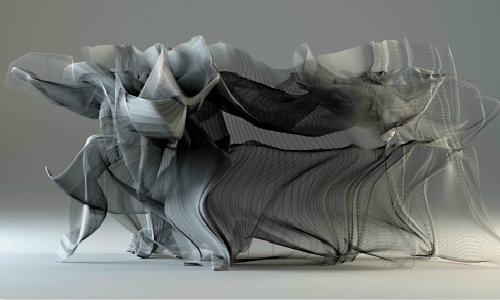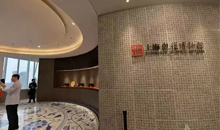Inside China’s first museum of design
Design Society is a partnership between state-owned developer China Merchants Shekou Holdings and the V&A — the first of its kind between a UK museum and a Chinese group.
Due to open its doors in October, Design Society is a partnership between state-owned developer China Merchants Shekou Holdings and the V&A — the first of its kind between a UK museum and a Chinese group.

“What we are trying to do is create a gallery that asks the audience what values are important to them in design, and that is important because it helps to determine the future of the design world,” said Zhao Rong, programme director of Design Society, at an event in Hong Kong, China. “This is especially important in China — with China poised to become a new global leader in design — what values consumers and designers should embrace, how will these values define the future.”
The futuristic four-storey building designed by Pritzker Prize-winning Tokyo architect Fumihiko Maki, will create a visually arresting landmark on the western coast of Shenzhen, looking out towards Hong Kong, China. The main gallery will be a gigantic 14,000 square metres, “so you can build architecture inside architecture — it lends itself to immersive art”. The building comprises three separate annexes and an imposing external staircase, with gardens and public terraces on the roof. The entrance of the concrete and steel structure will feature a triple-height glazed atrium.
The location is also significant, said Ole Bouman, director of the Design Society. “The urban context [around the museum] is in rapid redevelopment and Shenzhen has played a pivotal role as a driver for a more modern China,” said Bouman. “It comes at a time when China’s economic shift is upgrading from manufacturing to design through digital technology. There cannot be a more suitable city to talk about manufacturing than Shenzhen, that is constantly shaped by fast-moving technology.”
As well as its own exhibitions, the museum will host a permanent gallery space for the V&A’s major collections of fashion, photography, furniture, products and graphic design, as well as theatre and performance. The inaugural exhibition, ‘Minding the Digital’, will reflect on the unprecedented impact of digitalisation in China and the rest of the world, said Rong.
‘Minding the Digital’ will bring the audience into a world of immersive design shaped by digital experiences, according to Rong, exploring the interplay between human and machine intelligence. On show will be a 3D-printed chair by Dutch designer Joris Laarman, digitally fabricated furniture by Chinese designer Zhang Zhoujie, and the biometric robotically fabricated Research Pavilion 2013-2014 by Achim Menges and Jan Knippers of Stuttgart University.
As well as its cutting-edge content, the museum is forward-thinking on account of its membership structure, added Bouman.
“In Chinese, the word for museum translates as ‘a place for precious objects’, which implies you have to build a collection and emphasise the heritage. So very quickly it becomes about the past, and less about playing an activating role for the future,” he said. “And that’s why we call ourselves Design Society. It shows that we aim to create an active platform with many collections. We are already establishing relationships with other major museum institutions around the world, as well as individuals, small labels, studios and architects.”
Bouman explained that for the museum, design is both a verb and a noun. “We want to design a society, as well as fostering a link between design and society.” For corporates to become sponsoring members — for example, a car manufacturer or a bank that might benefit from use of the venue and curatorial expertise — the cost could be between US$100,000 to US$300,000. For individuals and charities, Bouman said, the membership will be in line with annual memberships at most major museums.
“As far as I know this is the first time this has been done. We’re starting from scratch so we don’t have to address any vested interests that you see often in the museum world,” added Bouman. “People are looking for answers to the big issues of our time, such as climate change, the pursuit of a better life, the protection of heath, as well as ongoing urbanisation and digitisation, it is clear that human creativity will be critical.”
Design Society aims to provide a platform for designers to address at least some of these important questions.
(Source: billionaire.com)


 沪公网安备31010402003309号
沪公网安备31010402003309号



